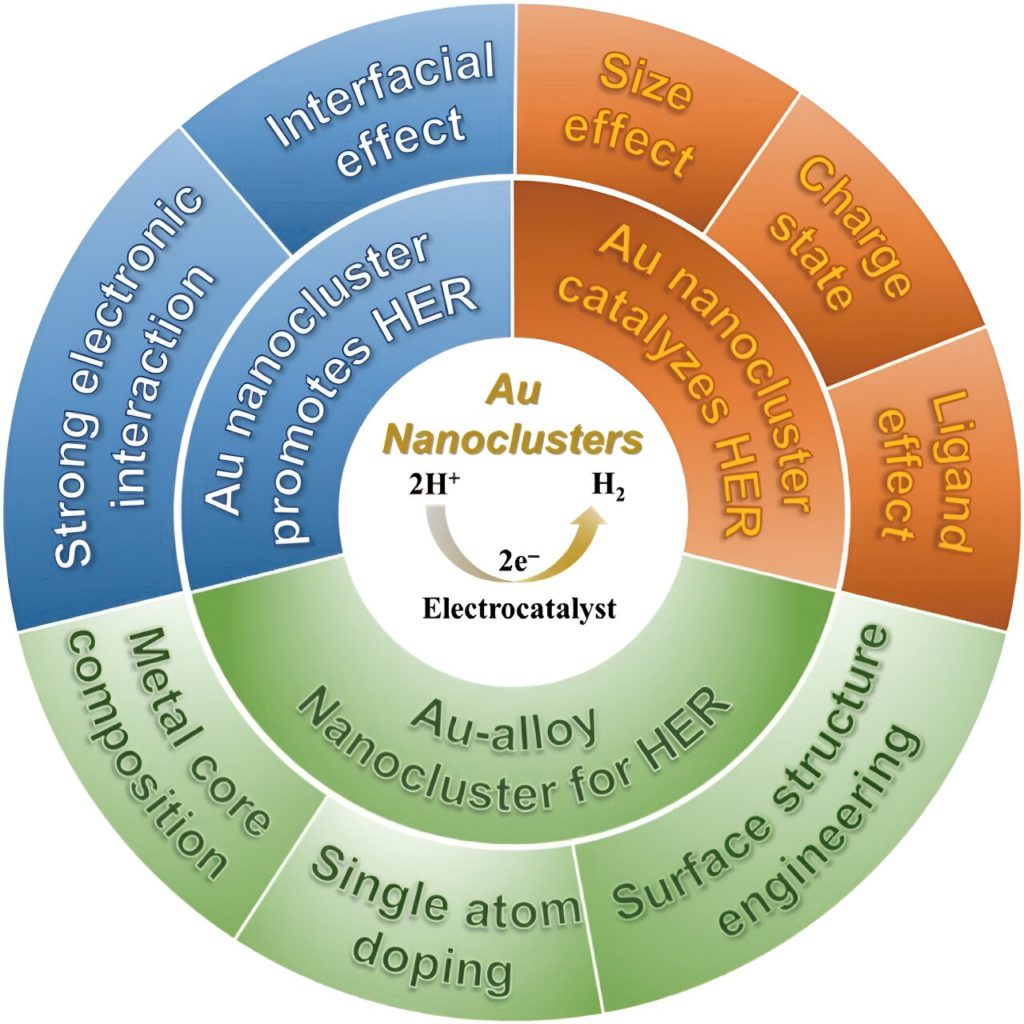
Gold nanoclusters may be the key to efficient hydrogen production, new research has found.
In a paper published in the journal Polyoxometalates, researchers at Tsinghua University explain that electrochemical water splitting, also called water electrolysis, is considered a promising process to produce hydrogen because it can take advantage of the electricity generated from renewable sources.
Water splitting, however, requires a reaction called hydrogen evolution reaction (HER), but the nanocatalysts involved in this HER do not have a uniform size, composition, structure, or chemical coordination environment to improve the efficiency and promote the reaction mechanistic understanding. Yet, the solution to this problem may lie in atomically precise gold nanoclusters.
“It is extremely difficult to achieve a model catalyst with absolute uniform size, definite geometric configuration, and a well-defined local chemical environment at the anatomical level to establish the unambiguous atomical-level structure-performance relationship. Atomically precise gold nanoclusters can potentially resolve those issues,” said Zhenghua Tang, co-author of the study. “Specifically, gold nanoclusters have demonstrated extraordinary catalytic properties in various organic reactions and electrocatalytic reactions.”

Gold nanoclusters are uniquely suited to be a catalyst for HER for several reasons. Unlike other nanocatalysts, gold nanoclusters have a precise nanostructure. This precise structure means that all of them are uniform in size, composition, morphology, and chemical environment.
It is also helpful for identifying the active sites for HER catalysis. The rich chemical reactivities of gold nanoclusters allow for both metal core tailoring and surface ligand engineering. Metal core tailoring is when another metal is introduced to the gold nanocluster, which forms a gold-alloy cluster.
Introducing another metal can endow novel catalytic capabilities and cut down the cost. In surface ligand engineering, the surface chemical environment can be fine-tuned to expose more active sites or change the structure of the nanocluster.
Finally, gold nanoclusters have other structural merits, such as the size being ultrasmall, which meets the principle of “small is precious” in the catalysis field; the morphology can be tuned and manipulated; robust stability with intact structure preserved in various reactions under mild conditions.
“The cases presented in this review clearly show that exceptional HER catalytic properties are often displayed because of the distinct advantages of gold nanoclusters compared to gold nanoparticles. However, challenges are certainly present in employing gold nanoclusters for HER catalysis,” Tang said.
Some of the common challenges associated with gold nanoclusters are finding a solution to the amount of gold that would be required to scale the use of these catalysts, problems with how the nanocatalysts perform in harsh conditions and inaccurate theoretical modelling.
Looking ahead, researchers are planning what the next steps in nanocatalyst research should be. Suggested avenues include testing the applicability of the gold cluster-based composite for other reactions coupled with HER and improving the electrical conductivity of the cluster-based composite catalyst.
“Due to the rapid development of synthetic techniques and catalysis science, we anticipate more research efforts will be dedicated to using atomically precise metal nanoclusters as model catalysts for various electrocatalytic reactions and beyond,” Tang said.
Comments
Christina Dian Parmionova
Moving towards efficient hydrogen production.